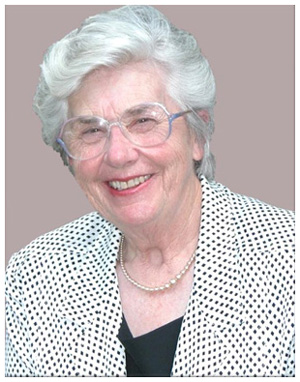Mary McAlister
What is your role on the Committee and what does it entail?
The first concept of forming a GBS support group was suggested by Professors James G McLeod AO FAA; John Pollard AO; Patricia Armati; and Clinical Sister Claudia Charlton of the Department of Neurology, University of Sydney in late 1989. However it was not until 1990 that the first informal committee was formed. I was part of that handful of people who helped formulate the aims and future focus of the present Association. The GBS Association of NSW became an officially incorporated support group on 25th November 1991. I have been on the committee continuously both prior to incorporation and since incorporation, serving in several capacities over those years.
Can you briefly share your experience with GBS?
My onset of GBS was in 1948 aged 15 years old. My own diagnosis was described as a “sort of Polio, but not Polio” – subsequently I was treated as a Polio patient. In 1948 no medical interventions such as IVIG or Plasmapheresis treatments were then available. Treatments depended on physiotherapy, coupled with rigid support frames and plaster splints, into which my whole body was splinted and  strapped. The upper frames were called “aeroplane splints” the arms being set at right angles to the body, the arms bent at the elbows, whilst my torso and legs were strapped down in a rigid frame; plaster boots held my feet at right angles, whilst my hands were also strapped into splints. I was in the body frame the whole eighteen months of my hospitalization. Even after discharge I wore the plaster boots nightly for the next five years. My immediate hospitalization lasted 18 months. After discharge in 1949 I spent the following 5 years as an outpatient receiving physiotherapy, initially every day, later three times a week. It was a long and slow recovery. I was in my thirties when I has told what I really had was actually Guillain Barré Syndrome.
strapped. The upper frames were called “aeroplane splints” the arms being set at right angles to the body, the arms bent at the elbows, whilst my torso and legs were strapped down in a rigid frame; plaster boots held my feet at right angles, whilst my hands were also strapped into splints. I was in the body frame the whole eighteen months of my hospitalization. Even after discharge I wore the plaster boots nightly for the next five years. My immediate hospitalization lasted 18 months. After discharge in 1949 I spent the following 5 years as an outpatient receiving physiotherapy, initially every day, later three times a week. It was a long and slow recovery. I was in my thirties when I has told what I really had was actually Guillain Barré Syndrome.
What was your toughest challenge you faced during your recovery and how did you over come it?
My own personal toughest challenge as a patient was to catch Scarlet Fever, one month from my initial onset. I had been admitted to a Tasmanian hospital, placed alone in an Isolation Ward in the Infectious Diseases area of the hospital, because of my ‘sort of Polio” diagnosis. My initial condition had resulted by this time as being most profoundly paralysed, and now this, Scarlet Fever; it was indeed the toughest challenge at that time of my life. Overcoming it? – One had just to wait patiently for the body to heal itself, no penicillin was available, nonetheless faith and confidence that things must get better, always prevail. If this is the bottom there is only one way and that is up!!
Has your GBS/CIDP journey changed your life in any way?
Definitely, my life with GBS must have changed me, how I find it hard to be specific. At fifteen prior to my onset of GBS, I had no preconceived concepts about my life ahead. Hospitalization between fifteen and nearly seventeen must have shaped my life ahead but I cannot say how. After my discharge from hospital in 1949 and still greatly ‘not-able’, my mother gave me some good advice, “face the world, do not hide at home, the world will not come to you at home... go to them... your life will be enriched if you do – at the end of each day go to bed reflecting on the positives of your day, and day by day the list grows longer”. I still do this.
What inspires you each day?
There are many aspects to one’s inspiration. It comes in many guises from many ordinary people we meet. It is a many faceted emotion. We absorb and learn and hope to emulate these positive aspects into our own lives. However quite simply and truthfully, it is my own family which inspire me, my parents now deceased, my husband, my children and my grandchildren, each adds an element of inspiration to my life and inspires me to realise and appreciate how lucky I am to be part of their lives, to love and to be loved. No one could wish for more than that.
